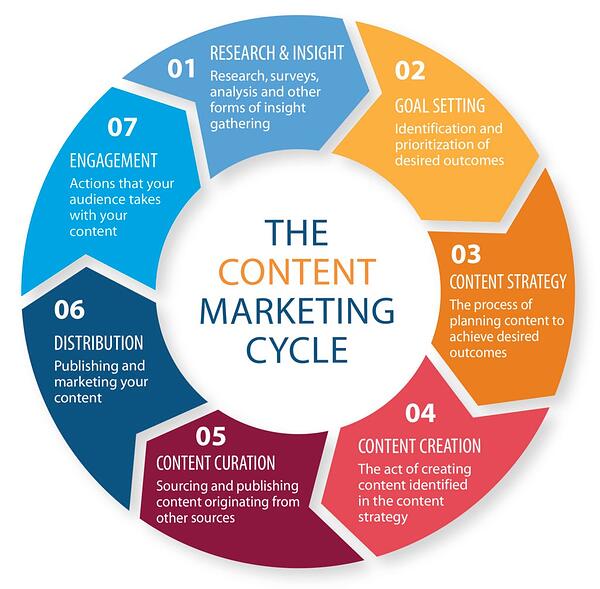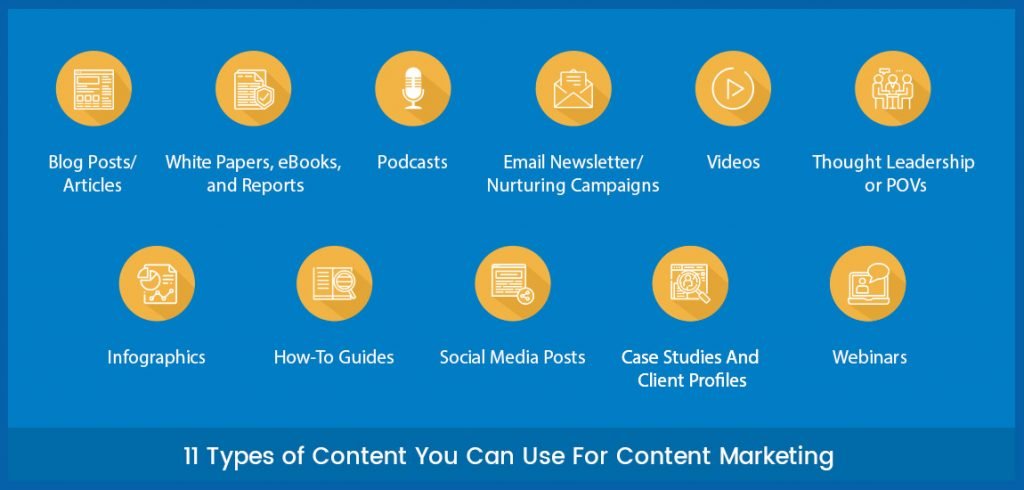SEO Insights: AI Overviews and Where Search is Going
Anyone who has consistently used search engines over the past couple of years has likely…
While there is still room for traditional marketing, digital marketing is now essential for businesses. As traditional methods of reaching out to new audiences become less and less effective, digital marketing has become ever more vital. However, with digital marketing comes the need for content. That content will lie at the heart of your online marketing, and that means that it needs to be created and managed in the right way. If your content marketing strategy is proving to be less than effective then it’s a good sign that you have launched it without the right preparation. Here is a quick guide to using content marketing and how it helps you grow your business.
At its most basic, content marketing is an approach to customer management that is strategically consistent. It is a means of using high-value content to persuade consumers to take an action that will result in more profits. The problem is that many marketers mistake quantity for quality, and that means a content marketing strategy will only be an ineffective waste of time. If you want your content marketing to transform the growth potential of your company then you need to be meticulous when it comes to providing value. Content marketing is not about selling your products. Instead, it is a means of resolving issues for your audience and building brand loyalty and brand reputation.
This is your overall plan for using content across every level of your business. Your content strategy is a blueprint that details exactly how your content will be used in the short and long-term. This means asking questions about the content that you use. Consider the following:
The answers to these questions will vary from business to business. Every business model will need to understand more about the kinds of content that their audience prefers, and where those customers spend their time online. The more that you understand your audience and your goals, the easier it is to make decisions on the content types that you create and where, when, and how to publish and share them.
Note: Never regurgitate your content marketing strategy from last year. Not only do technical changes occur, such as search engine updates, but so do consumer trends. A well-developed content marketing strategy will need to be reworked every year without fail.
 What’s in a Content Marketing Strategy?
What’s in a Content Marketing Strategy?A strong content marketing strategy will require the use of a series of well-thought-out steps. Each step will take time to perfect, but the more time and resources that you dedicate to the foundations, the stronger your content marketing strategy will be.
Without having goals to aim for, you will never have a clear picture of how well your content marketing is performing. Start with a general view of your intent, defining your target audience and setting out clearly what value you are providing them with your content. This will help you understand your goals. While all businesses will have different goals, you should certainly consider the following targets:
Identify your company goals and you will be in a much better position to launch your content into the world.
Having clearly defined key performance indicators (KPIs) makes it much easier to determine whether you are meeting your goals. They are a useful milestone and should be evaluated regularly. The obvious KPIs to define are:
The more clearly defined your goals and your KPIs, the easier it is to track your content marketing and make adjustments as needed.
This will be one of the most important elements of your content preparation. You will be far more successful if you know who you are creating content for. The following three steps absolutely must be taken before you start onto the next stage of content strategy development. These are:
Most businesses will have existing content that needs to be addressed. Blog posts, social media content, and any videos, infographics, or photographs you have used need to be evaluated in terms of your goals. Content audits need to:
Remove any duplicate contentDuplicate content is content that appears more than once across a single website. Duplicate content can be a sign of poor resource management, low trust, or a lack of quality control., create realistic sitemaps, and use analytics to determine the effectiveness of your current content. Remove anything that may be damaging your business or weakening your SEO.
This will come down to what you have learned about your target audience. People spend their time online in a variety of ways, and your audience will have their preferences. Some audiences will spend all of their time on Instagram or Reddit, while others will scroll down Facebook or LinkedIn looking for just the right content. Knowing where to publish your content is a critical component of a well-developed content marketing strategy.
While the majority of content strategies will involve the use of a blog on your website (this is the central core of your digital presence), this shouldn’t be your only avenue to explore. Video marketing is particularly useful in the current climate, but infographics have high value as well. Being able to break down large volumes of data into one easy to read image can be very effective when it comes to providing value. You might also want to consider:
When it comes to content, it is your goals and your audience that should dictate the formats that you make the most use of.

Once you know more about the type of content to be using in your content marketing strategy, you then need to create that content. Someone will need to be in charge of content, and you will need a variety of physical and digital tools to ensure that your content is designed to be suitable for your audience. You may find that you need one of the following:
When it comes to the creation of your content, make sure that you have:
Once approved, your content can then be uploaded and published to your platform of choice.
One of the most common issues with content marketing is that business owners often feel pressured to have a constant stream of fresh, audience grabbing content. That can lead to rushed, mistimed, and non-value content. Avoid this risk by having a content calendar that will guide you in creating and publishing just the right content at just the right time. Use a task management app to help you with this, and be aware well in advance of any industry-relevant trends that you can tap into, or seasonal content that you can take advantage of at set times of the year.
Once your content is out in the digital world, the work doesn’t stop. You then need to measure how effective it was in terms of your initial goals. Look at your KPIs, and if you have not met them then you will know that changes need to be made. However, don’t expect immediate results. Content marketing can be a long game, and the results typically accumulate over a longer period. Let your content work for you and don’t assume that it is a failure simply because you aren’t immediately at the top of a Google results page ten minutes after sharing your blog posts to Facebook.
From start to finish, a well-planned content marketing strategy should always be of value to your customers and you. Spend time on each step in the development of a robust content marketing strategy and your business will only grow. Ignore content marketing and you will only lose out to your competitors.
Are you struggling to think about what to write about for your content marketing efforts? It’s not an uncommon situation–particularly…
We’re going to take a look at how you can turn your eCommerce dream into a reality.
In recent years, the coronavirus pandemic and war in Ukraine have taken a significant toll on the world's finances. Add…